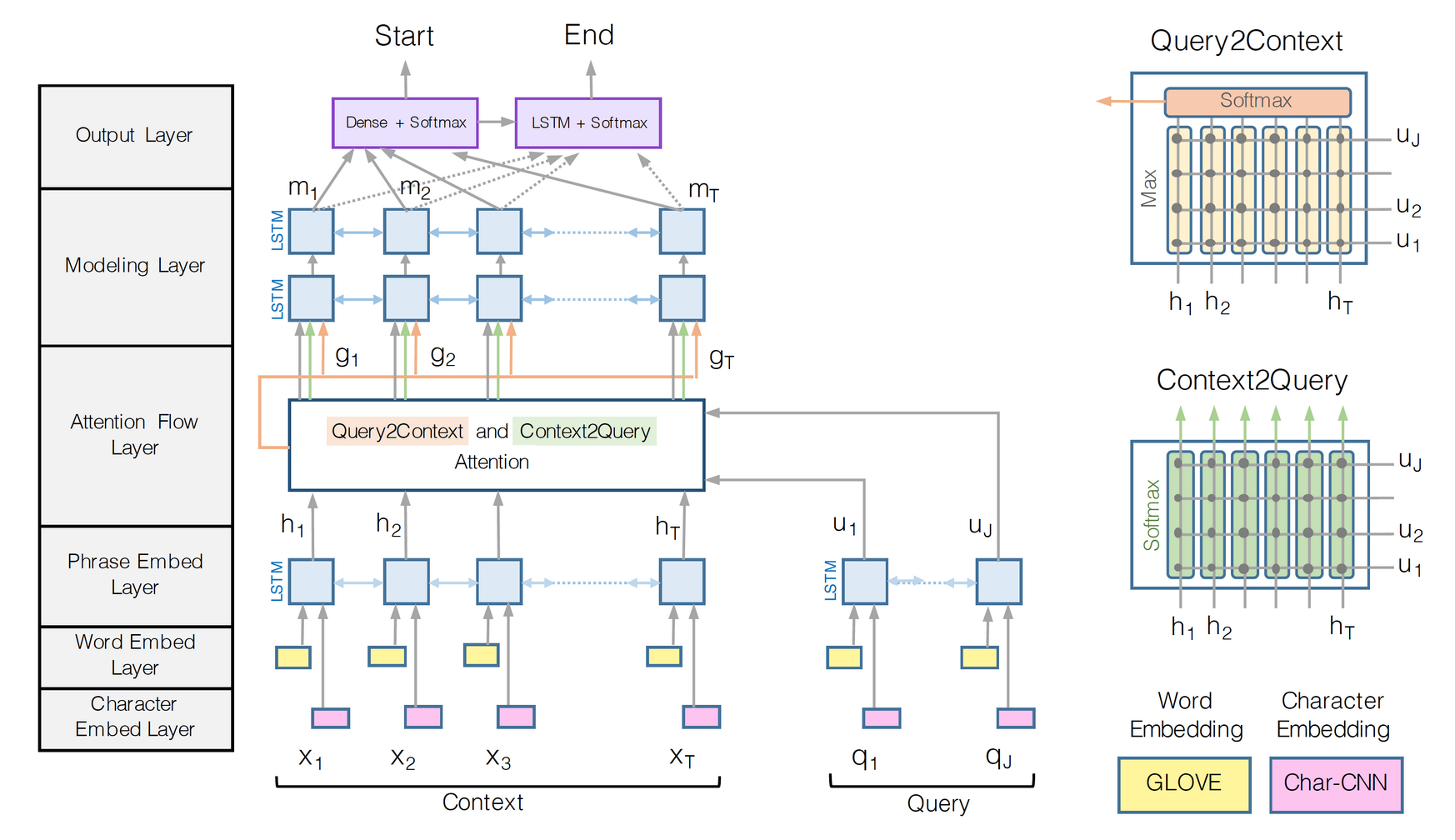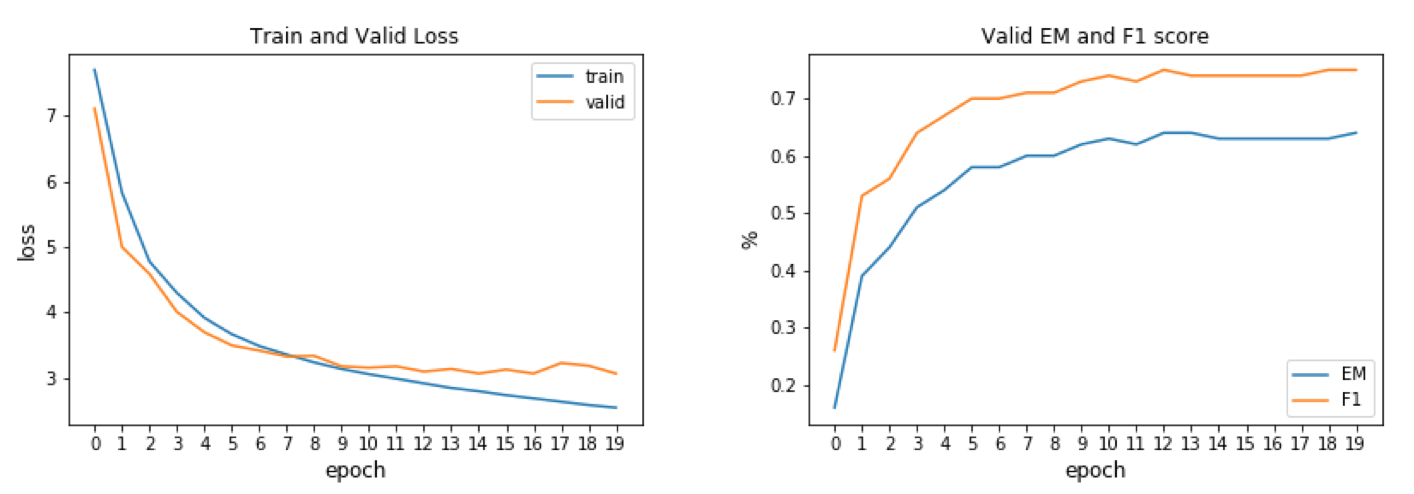The goal of this project was for me to get familiar with the Question Answering task, a very active topic in NLP research.
To this end, I implemented a Bidirectional Attention Flow neural network as a baseline, improving Chris Chute's model implementation, adding word-character inputs as described in the original paper.
I found this project very useful from a learning perspective so I highly recommend you to dig into the code and work on improving this baseline.
You can reproduce the work following the Set-Up section, and potentially (recommended!) train the model on a single GPU setting the cuda variable in config.py to True.
 Source: BiDAF paper
Source: BiDAF paper
├── config.py <- Configuration file with data directories and hyperparamters to train the model
├── data_loader.py <- Define an iterator who collects batches of data to train the model
├── eval.py <- Evaluate the model on a new pair of (context, question)
├── layers.py <- Define the various layers to be used by the main BiDAF model
├── make_dataset.py <- Download the SquAD dataset and pre-process the data for training
├── model.py. <- Define the BiDAF model architecture
├── requirements.txt <- Required Python libraries to build the project
├── test.py <- Test the performance of a trained model on the DEV dataset
├── train.py <- Train a model using the TRAIN dataset only
├── utils.py <- Group a bunch of useful functions to process the data
Exact-Match and F1 Score on Validation set after training:
| EM | F1 |
|---|---|
| 0.64 | 0.75 |
- Clone the repository
- Create a directory for your experiments, logs and model weights:
mkdir output - Download GloVE word vectors: https://nlp.stanford.edu/projects/glove/
- Modify the
config.pyfile to set up the paths where your GloVE, SquAD and models will be located - Create a Python virtual environment, source to it:
mkvirualenv qa-env ; workon qa-envif you use virtualenvwrapper - Install the dependencies:
pip install -r requirements.txt ; python -m spacy download en - Run
python make_dataset.pyto download SquAD dataset and pre-process the data - Run
python train.pyto train the model with hyper-parameters found inconfig.py - Run
python test.pyto test the model EM and F1 scores on Dev examples - Play with
eval.pyto answer your own questions! :)
- set up a variable to choose between training the model with word only VS word + characters
- collect the moving average of the weights during training and use them during testing
- add the ability to train the model on multiple GPUs, and offer half-precision training to speed-up the training
- improve this baseline using pre-training encoding such as BERT, and/or set-up a multi-task learning pipeline to jointly learn to answer questions together with another closely related NLP task.
- SQuAD dataset: https://arxiv.org/abs/1606.05250
- Bidirectional Attention Flow for Machine Comprehension" by Minjoon Seo, Aniruddha Kembhavi, Ali Farhadi, Hannaneh Hajishirzi : https://arxiv.org/abs/1611.01603
- Authors' TensorFlow implementation: https://allenai.github.io/bi-att-flow/
- BERT: Pre-training of Deep Bidirectional Transformers for Language Understanding Jacob Devlin, Ming-Wei Chang, Kenton Lee, Kristina Toutanova : https://arxiv.org/abs/1810.04805
- BiDAF baseline model: https://github.com/chrischute/squad
- PyTorch pretrained BERT: https://github.com/huggingface/pytorch-pretrained-BERT
- GloVE: https://nlp.stanford.edu/projects/glove/
